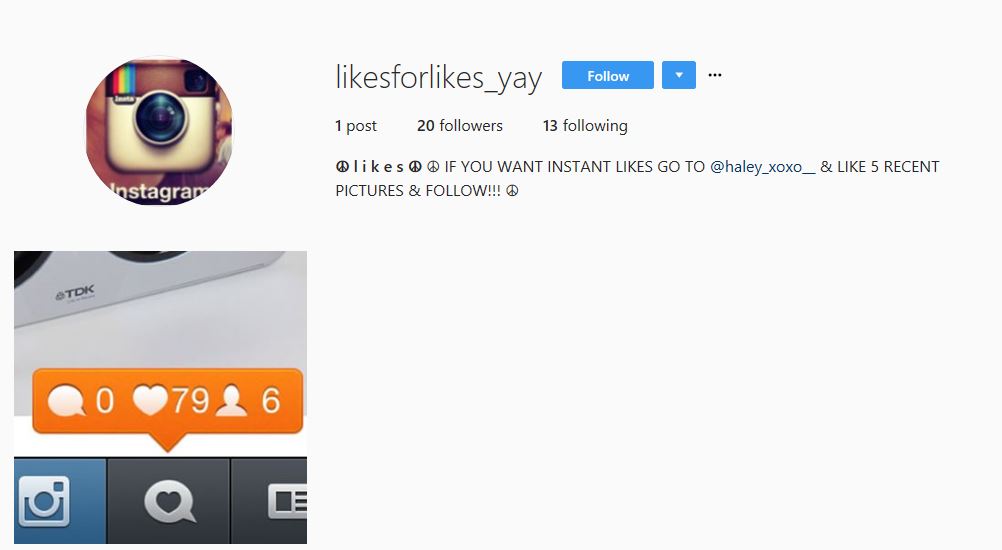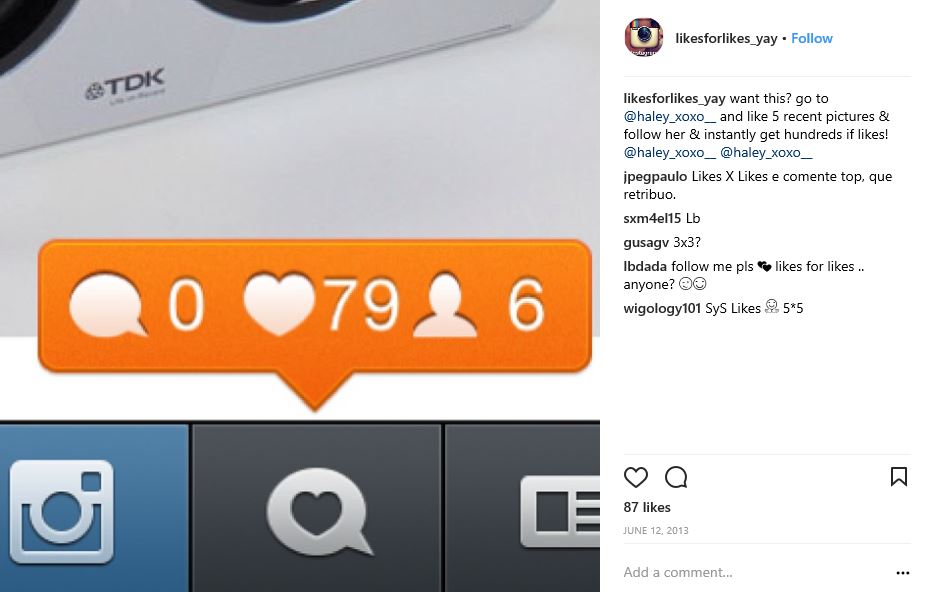Spot the Fake: The Importance of Having Real Followers on Social

January 15, 2018
A lot happens on Instagram. It’s a place for conversation, a source of inspiration and even serves as a point of purchase for many buyers. Having a strong Instagram presence goes without saying for brands – it’s like singing along to Queen’s Bohemian Rhapsody when it comes on the radio – you kind of just have to go for it. That said, there are some best practices you should be aware of when cultivating your social media following. One of these go-to rules is always work on accruing real followers. Now, building a follower list of real people may seem like given, but let us tell you why it isn’t. According to research conducted by Iconosquare, “at least 40 percent of comments on brand Instagram posts are fake.” That means out of 200 comments, only 120 of them were written by real people. And, as you might imagine, these fake interactions – whether they be comments or friend requests – skew social media reporting and social media marketing analytics, muddle engagement rates and send an inauthentic message that is a major turn-off for social media users.
First, let’s get one thing straight — inflating your follower count with fake followers can be tempting and lots of people do it. In fact, there are entire websites dedicated to supplying accounts with massive amounts of fake followers, but before you start cutting checks, you need to weigh the costs. One major issue with fake follower counts is disproportionate engagement rates. Think about it: you’ve just spent all of this money buying new followers, but, when you look at the quality of discussion and number of likes per post the stats look pretty dismal, especially for a brand with so many followers. This issue occurs because bots are, well, bots – they aren’t real people with thoughts and opinions. They don’t bring quality to the conversation and they certainly don’t engage with content in the same way an actual person does. Oftentimes, users can get tipped off to fake follower counts when they see retail brands with thousands of followers only getting 10 or 20 likes and three or four comments on their posts – and that’s when lack of authenticity and honesty can really start hurting a retail brand’s reputation.
Engagement isn’t the only statistic that takes a hit when you hire fake followers. As a retail brand, traffic and sales are two hugely important factors that are heavily impacted by your customer base. When you have real followers on social media – real customers – you can appeal to their desire to make a purchase through social media marketing tactics. Fake followers do nothing to improve ROI – they don’t go to stores, they don’t click links and they certainly don’t spend money.
If influencer marketing is part of your social media marketing strategy for retail, you’re going to want to follow the same precautions. Yes, influencers offer an enticing opportunity to reach new audiences and promote products, but you have to do your homework before forging a partnership. As we mentioned in our blog Is Your Selling Under the Influence?, follower count isn’t the only factor to consider when selecting an influencer for your social media marketing services. There are plenty of influencers out there who purchase followers, which means your endorsement may not be reaching actual people. Plus, like any other brand, purchasing followers creates an air of dishonesty that just doesn’t resonate with social media users. The influencer you decide to work with should share the same core values as your retail brand and project an image that aligns with your retail brand’s overall look and feel. Being a little picky about which influencers you align with will help you maintain social media brand consistency while ensuring your brand continues to target and reach the right prospects.
So, how do you spot a fake follower? Whether it be on an influencer’s friends list or your own social media profile, there are a few tell-tale signs you can look for. Many bot profiles have tons of followers but only have a few, generic personal posts. If you suspect an account is using stock or stolen photography, Google Images actually offers a drag-and-drop search function that will lead you to a photo’s source. You can also identify bots through their comments, which are usually completely irrelevant to the post and shamelessly plug a particular product. Here are a few examples:
Last but not least, you think a bot is a bot, you’re probably right! Listen to your intuition and, if something doesn’t feel right, delete their friend request.
Social media is crucial to retail marketing strategies because it allows brands to engage with customers in a more personal and authentic way. According to a report conducted by Sprout Social, “Honesty” and “Friendliness” were the top behaviors consumers want from brands from retail brands on social media. Buying followers is anything but honest and your customers will be able to tell the difference between what’s real and what’s phony. Whether you’re developing your own social media account or choose to use influencer marketing, researching the quality of your followers will ensure your brand stays honest – and honesty is the best policy, especially when it comes to social media marketing for retail brands.


